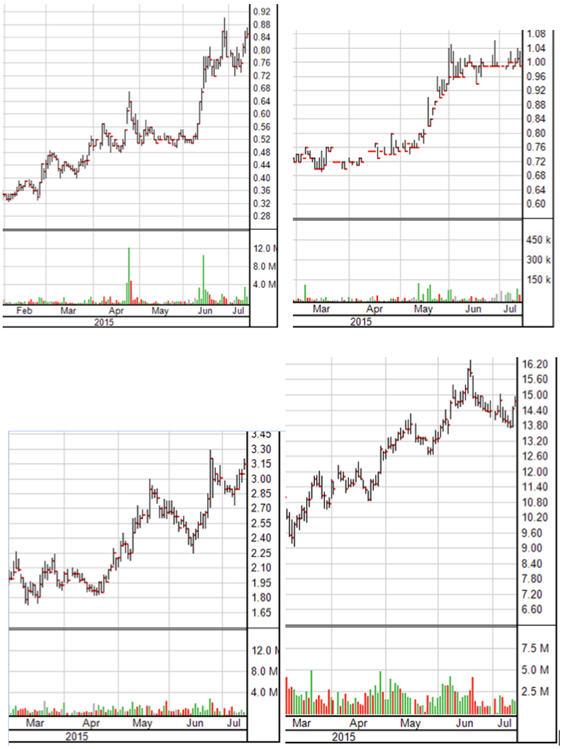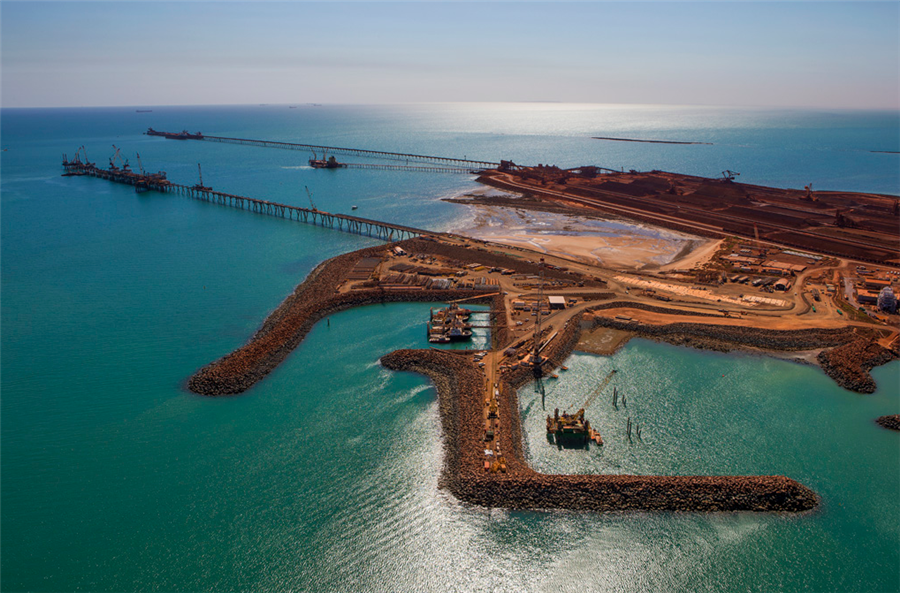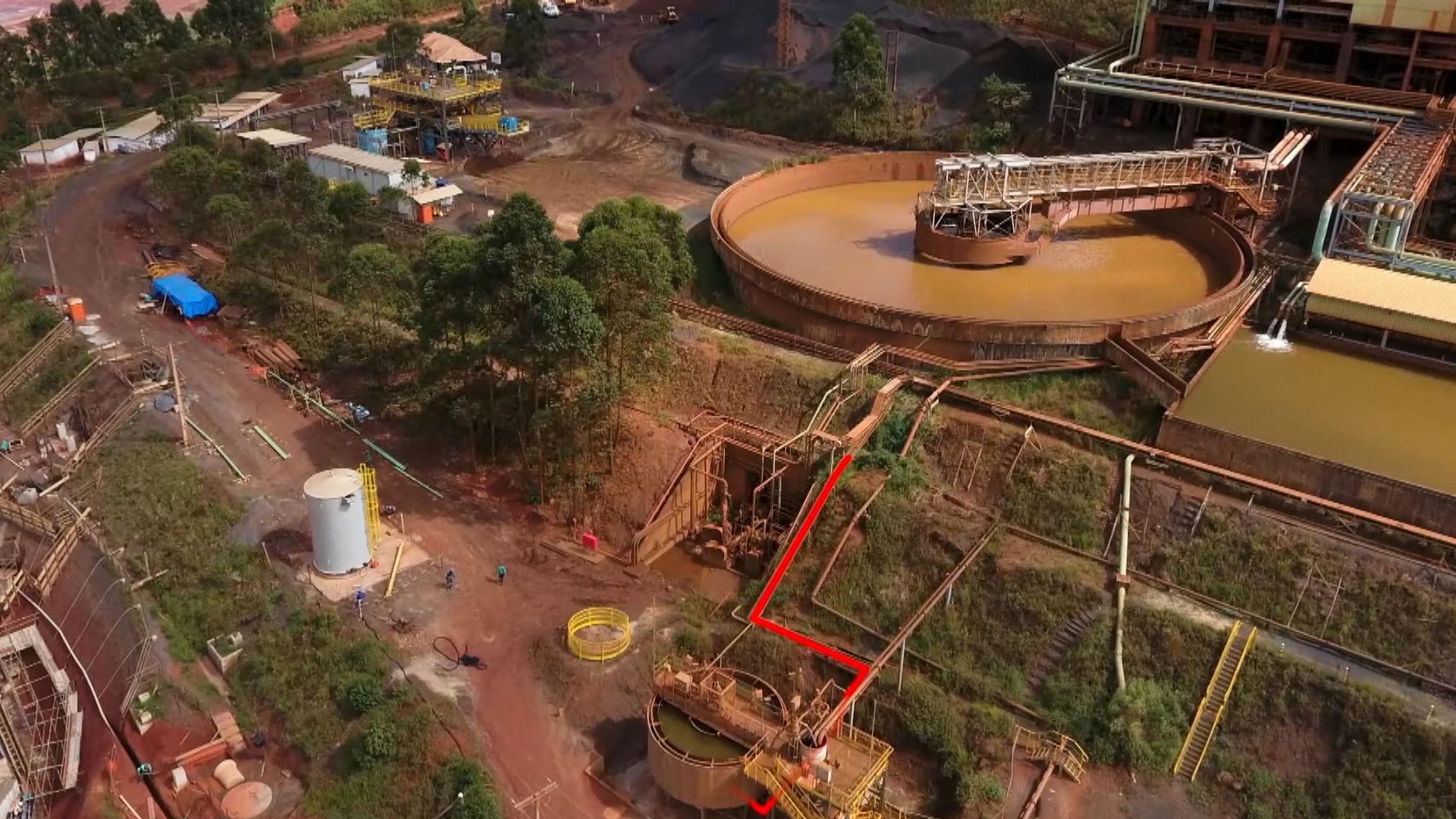Little left to lose
Is another leg down looming for miners and explorers? Perhaps. But when a sector is so downtrodden that it barely shrugs at major global economic events, there is little left to lose.
Two weeks sailing in Alaska. An incredible trip: humpback whales and icebergs and grizzly bears and glaciers, almost all of it in glorious sunshine. I have sailed the waters of B.C. since childhood but Alaska is different: vast and rugged, with peaks rising straight out of the ocean and often not another boat in sight.
Cell coverage followed me for the first few days, then disappeared. I had no way of knowing what was going on in Greece or how badly Chinese markets were melting down or what it all meant for the price of gold.
Returning to civilization, somewhat panicked about what I had missed, I was reminded of the unshakeable nature of a depressed market.
The seven-year-old Greek drama had reached peak pressure. Chinese stocks went into freefall, a 30% loss in just four weeks representing more than $3 trillion in evaporated value. Real progress in negotiations with Iran, which today produced an historic deal, had the price of oil down 10%. Some significant situations had played out.
Gold barely blinked. It slid some, but stayed comfortably inside its 4-month range.
Copper did blink, but not substantially. The red metal punched down to US$2.42 per lb., a new five-year low, but it was just another step down for a price that has been losing ground for 4.5 years. Copper’s decline is significant to be sure and will be the topic of another article, but in the moment copper’s move was minimal.
The Dow Jones stepped back 2% and stayed there for a while but has since regained lost ground. Ditto with the S&P.
Take away: US markets are ignoring world events in their ceaseless march higher, a phenomenon that sparks endless debate, while mining markets are in such a bottom-bouncing funk that it would take a true cataclysm to push them down dramatically from here.
So I didn’t actually miss much.
Well, there are things that to be said about the last two weeks, notably around gold. Why didn’t it benefit from economic panic in China and Greece? The short answer is that Chinese investors (a) lost a whack of money in short order and (b) couldn’t monetize what remained of their portfolios because the government halted half of Chinese stocks from trading and the other half couldn’t beg a bid. Faced with that scenario, those who owned gold used it for exactly its purpose: a security blanket when economic sh*t hits the fan. They sold, pushing the price down.
As for Greece, that drama has been dragging on so long that the markets have stopped caring. Consensus was another last-minute bailout package would surface, which is exactly what happened (though the degree to which Greek PM Alexis Tsipras relented, totally abandoning the concepts on which he was elected, is shocking).
What now? For Greece, another three years of recession and unemployment, plus good odds of a popular revolt in the birthplace of democracy.
For Chinese stock markets, a reset. Inexperienced Chinese investors have learned that stocks do not rise inexorably.
For the US, arguments for a fall crash are getting louder. I don’t yet know whether I agree, but I do know that a six-year run has to correct at some point, that a strong US dollar is causing pain, that private equity firms are selling stocks as fast as possible ($73 billion liquidated since January, the most ever in a six-month period), and that faith in central banks – the foundation upon which US markets sit – erodes every time Yellen postpones raising rates.
For mining and exploration: same old, same old. We continue to bounce along the bottom. The sector has been so hammered that very little downside remains. Even if US markets do crash in the fall, miners and explorers will not decline dramatically – that’s already done.
The sector’s steady-on response to the world’s latest economic debacles reinforces my opinion that the bottom is baked in. As for the recovery, remember that rebounds rarely begin with a bang. On the contrary, they start so slowly that it is hard to tell what is happening.
Positive news starts seeping into the stream, but gets lost amongst ongoing negativity. After being so badly burned, investors guard themselves against hope that things are turning around. Contrarian investors move in but some of their bets get hammered, because a sideways market means just as many losers as gainers. Momentum is evasive. Optimism and energy are hard to find.
Gradually a better picture emerges. Good news becomes more prevalent than bad. Interest returns to commodities. Companies start getting rewarded for good deals, for discoveries, for getting things done. Raising money becomes possible, for good companies at least.
The change happens so slowly that it’s near impossible to see. Once it becomes apparent, the more cautious among the astute group pile in. Then it become obvious and Mr. Generalist starts buying.
Money can be made entering anywhere along that continuum…but of course the biggest gains come from the lowest entry points. However, to attempt to pinpoint the precise bottom is to set yourself up for failure.
Here’s how I see it. It takes a good chunk of time to assess a potential investment. Financials to dive through, management to contact, geology to understand, location risks and benefits to weigh, peers to compare. If I go through all that and surface with a Yes, the next question is When.
Right now, I only consider company questions in considering When. A recent financing-with-warrants about to come free trading matters, because it will likely pull the price down to financings levels. An imminent permitting milestone is important. So are realistic rumours of an asset deal or drilling hit or the like.
I time my Buys based on those considerations – which means I am not holding off on buying until mining makes its ‘final leg down’, the slide to a true bottom that many believe is still coming.
It may happen. If it does, some stocks may yet get cheaper.
However, there are a couple good reasons not to wait.
For one, really good stories have already been moving for months and a ‘final leg down’ would likely not pull them below previous lows. I had a good conversation with Ari Sussman of Continental Gold recently, in which we talked about how the best companies are already in bull markets. Look at these charts, all of exploration or mining companies:
I do not see mining ‘correcting’ so much that any of these stocks will be cheaper than they were a few months ago. That’s the hard-to-see side of the rebound: amidst all the companies still struggling are a select few for whom the bull market has already begun.
Secondly, if there is another leg down still pending, I do not see that it can be significant compared to the beating already taken and, more importantly, the upside to come. Don’t take it just from me: in a recent article, Brent Cook had this to say:
“The most money I ever made was from the stocks I bought in the bust between 1997 and 2002. It was extremely hard to do because it was scary. I would buy a stock and then it would drop by half again. You are all alone and the market gives you no encouragement at all.”
It is scary, but the contrast that matters is between prices today and prices a few years from today. Since we cannot know for sure about the latter and the former is a scary bear market place, it makes sense that people don’t want to move. But while the difference between buying at $0.25 and $0.40 seems significant today, it will matter much less if the stock rises to $3 or more.
At the end of the day it’s about perspective. Identifying good investments is a time consuming process. Timing is important, but don’t get so stymied by the big picture unknowns that you fail to position.
Because the answers to those unknowns become apparent slowly, gradually, insidiously. Waiting for clarity will mean missing the best seats on the boat.
China crashed and Greece almost collapsed. Mining barely responded because a sector can only go so low.
Buy low, sell high. Simple enough, though it glosses over the boldness needed to act when everyone is waiting for someone else to go first. That’s where mining is now, whether there’s a final leg down ahead or not. So due your diligence and make some moves.
Resource Maven finds and explains the news that matters every day in the world of resource exploration and development.
Click HERE to have Maven’s mining news emailed to you daily.
Or follow Maven on Twitter: @miningmavengwen
To learn how to turn resource knowledge into investment success: subscribe to Resource Maven.
EDITORIAL POLICY AND COPYRIGHT: Companies are selected based solely on merit; fees are not paid. This document is protected by copyright laws and may not be reproduced in any form for other than personal use without prior written consent from the publisher.
DISCLAIMER: The information in this publication is not intended to be, nor shall constitute, an offer to sell or solicit any offer to buy any security. The information presented on this website is subject to change without notice, and neither Resource Maven (Maven) nor its affiliates assume any responsibility to update this information. Maven is not registered as a securities broker-dealer or an investment adviser in any jurisdiction. Additionally, it is not intended to be a complete description of the securities, markets, or developments referred to in the material. Maven cannot and does not assess, verify or guarantee the adequacy, accuracy or completeness of any information, the suitability or profitability of any particular investment, or the potential value of any investment or informational source. Additionally, Maven in no way warrants the solvency, financial condition, or investment advisability of any of the securities mentioned. Furthermore, Maven accepts no liability whatsoever for any direct or consequential loss arising from any use of our product, website, or other content. The reader bears responsibility for his/her own investment research and decisions and should seek the advice of a qualified investment advisor and investigate and fully understand any and all risks before investing. Information and statistical data contained in this website were obtained or derived from sources believed to be reliable. However, Maven does not represent that any such information, opinion or statistical data is accurate or complete and should not be relied upon as such. This publication may provide addresses of, or contain hyperlinks to, Internet websites. Maven has not reviewed the Internet website of any third party and takes no responsibility for the contents thereof. Each such address or hyperlink is provided solely for the convenience and information of this website’s users, and the content of linked third-party websites is not in any way incorporated into this website. Those who choose to access such third-party websites or follow such hyperlinks do so at their own risk. The publisher, owner, writer or their affiliates may own securities of or may have participated in the financings of some or all of the companies mentioned in this publication.
More News
Rio Tinto posts lowest Q1 iron ore shipments since 2019, tempers forecast
April 15, 2025 | 03:55 pm
Trump orders tariff probe on all US critical mineral imports
April 15, 2025 | 03:16 pm
{{ commodity.name }}
{{ post.title }}
{{ post.date }}





Comments